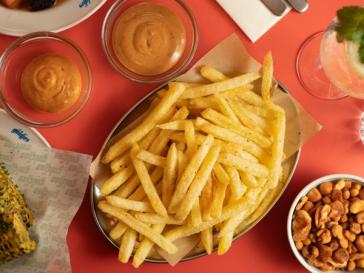

Words: Matt Roberts
As a natural follow on from last week’s tips for the shoulders, this week I’m going to focus on the arms, also known as the biceps (front of the upper arm) and the triceps (back of the upper arm).
You would be hard pushed to find a man out there that doesn’t like the idea of filling the sleeves of a summer t-shirt so hopefully these tips will get you on the right track. Many of the multi-joint upper body exercises I’ve mentioned previously (presses, pulls and rows) heavily involve the arm muscles and will therefore already help to stimulate some growth. However, using targeted single joint exercises, such as those suggested below, affords the potential for stronger contractions and thus greater muscular growth.
The biceps are made up of a short head and a long head; similarly, the triceps are made up of a long head, a medial head and a lateral head. The way you position the arm can affect the level of contribution from each head. I have provided suggestions to help maximise growth and symmetry of each head in both muscle groups.
This exercise puts the long head of the biceps in a position for it to be maximally active as the top of the arm is extended slightly behind the body. To set this one up, lie on an incline bench (roughly set at 45 degrees) with your arms hanging either side and a dumbbell in each hand.
Curl the dumbbells up towards the shoulders, minimizing and forward movement at the elbow. Once you have reached full elbow flexion, lower the dumbbells under control back to the start position. Note – if you have a history of shoulder pain or injury it might be best to limit your exposure to this exercise.
The is a great option to really stimulate the small head of the biceps and build a nice peak to the front of the upper arm. The set-up also uses an incline bench except this time you lie with your chest down at the top of the bench with your legs straddling it.
Holding dumbbells in each hand let your arms hang and curl the dumbbells up towards your shoulders. Then lower them under control back to the start position. The big advantage with this exercise is the constant tension in the muscles throughout, which peaks at the top of the movement.
The medial and lateral heads of the triceps are more active during movements in which the arms are held at the sides of the body. Most push down variations will therefore work well for these parts of the muscle. However, a traditional standing rope push down is often poorly executed especially when too much weight is used.
And when form is lost, you lose tension in the muscle and put stress on the elbows and shoulders. Therefore, going to a tall kneeling position (down on both knees, tall at the hips) and using a slightly longer rope will allow you to better hold your torso position and increase the range of motion. This in turn will increase the amount of tension you can create at the bottom of the movement which will help to stimulate more growth.
All four of these exercises will work well with the set and rep scheme from previous weeks. If you do two upper body sessions a week you can pair these exercises (one triceps with one biceps) and use them as a superset at the end of each upper body session:
Week 1 – 3×8 (72reps/session, 144reps/week), Week 2 – 3x 10 (90reps/session, 180reps/week), Week 3 – 3×12 (108reps/session, 216reps/week), Week 4 (deload week), 2×10 (60reps/session, 120reps/week). Then repeat the cycle for next 4 weeks aiming to add small increases to the weights used (don’t miss any reps though). Aim to include these exercises into your training schedule twice each week.


